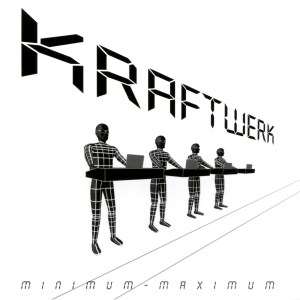From another comment I made
A linux installer for windows that works just like a normal installer on windows. You download the
.exe, double click it, it opens a wizard you can walk though, and by the end of the process, after it reboots, you’re in a linux distro.
How could something like this be implemented?
My idea:
Best case scenario where multiple data partitions exist and can accommodate the user data stored on C:/ + there’s a swap partition -->
- download a linux iso
- deactivate swap
- replace swap partition with ISO contents
- modify contents to auto install linux with settings from wizard
- add boot entry to boot from old swap / modified ISO
- reboot
- install linux with a nice progress animation
- move user data from C:/ to other partition
- replace C:/ with linux
- install alternatives to programs found on windows (firefox for edge, gimp for paint, inkscape for …, libreoffice for MS office, etc.)
- move user data to
/home/$username - configure DE with theme (gnome for macos look, kde with theme for windows look)
- other customisations
- reboot into linux
Dunno if this is feasible in the best case scenario.
Read on about WUBI, it’s outdated, but perhaps you can adapt it to your use-case.
Ah, the nostalgia, WUBI is how I installed my first distro.
P.S. Your “Anti Commercial-AI license” doesn’t really do anything.
In the bad old days there used to be an ubuntu tool that you could install linux from windows. From memory it created a disk image inside your Windows drive, and then setup a boot environment that could mount and boot into the disk image. Kinda like a livecd, but persistent?
Ill try find more info and update. (Ah, its Wubi, which the other poster mentioned already).
Odd that most of that page is about how to uninstall it. The XP references really dates it.
Looks interesting, thank you. The biggest difference I can see here is the installation to virtual drive on an NTFS partition. But it’s good to know that a lot of the work has been done. Probably one could go a little further and not use a virtual drive.
In the bad old days there used to be an ubuntu tool that you could install linux from windows.
Why bad old days?
Looong time ago, and the linux world wasnt anywhere near stable and polished as it is now (neither was Windows either if we are being honest with ourselves).
While Wubi does not install Ubuntu directly to its own partition this can also be accomplished by using LVPM, the Loopmounted Virtual Partition Manager, to transfer the Wubi-generated Ubuntu installation to a dedicated real partition
I vaguely recall using something like that and trashing both OS installs.
Resizing partitions live is very dangerous, which is why normally its done from a bootable CD or USB. Doing it live from Windows wont be easy. And if you have to boot into a usb or dvd environment, may as well just use the regular installation media?
Recently I got a new PC with Windows, and it could resize its partition without problems. You can do it even with Powershell. I don’t know how dangerous it is, but with the whole “copying user data” I would hope that the installer would advise users to create a full backup anyway.
No reboot? Impressive, maybe MS solved that problem.
Shrinking/moving is usually the more dangerous operation, but maybe they have solved it.
No matter how many times you tell users to backup their data, they won’t do it, and will blame you for their data loss anyway :D
Not sure why, but a lot of other distros did something just like this in the past (see the comments about WUBI) and no longer do. Q4OS still has a .exe installer though.
I couldn’t find the source for Q4OS’s exe installer 🤔 They’re on github and sourceforge, but neither have the source for it. Am I looking in the wrong places?
IIUC, Q4OS only shares its source code on request. Furthermore, the Windows installer is a fork (or somewhat based on) WubiUEFI.
Q4OS still has a .exe installer though.
TIL. This is pretty cool. I wonder how much effort it would cost to make this a viable option for most of the popular distros.
You have a decent amount of Linux knowledge but you also have gaps which I find a little confusing.
Anyway what your describing isn’t possible and even if it was I do not think it would be useful.
It was possible for Ubuntu once upon a time
Yes, but that was XP and MBR
You are right, I didn’t think of MBR.
It would be better for your nerves to just do a normal GNU/Linux installation. There are too many ways the installation can go wrong:
replace swap partition with ISO contents
For example, Ubuntu ISO has a size of 5.7G. But my swap, which you previously deactivated, was 4G. Either 2G, or it didn’t exist at all.
move user data from C:/ to other partition
The other partition may not exist or may have capacity smaller than C:/.
replace C:/ with linux
The installed Linux must also be stored somewhere. And there is also a copy partition for C. The same problem of lack of space.
move user data to /home/$username
From %APPDATA%? You would have to be a know-it-all to resolve the location paths and configuration names of literally every existing program.
reboot into linux
And it is at this moment that Windows will completely randomly decide to update and rewrite the bootloader :)The biggest barrier is writing lots of formatted data to disk without a pre-existing filesystem structure. Look at nixos-anywhere for an example; the first thing it does is ensure that it’s booted into Linux, because otherwise it can’t trust that the disks are laid out properly.
No sure what you mean. On which step is writing formatted data to disk happening?
Steps 8, 9, and 11 assume that the filesystem is in a Linux-compatible state and Windows-compatible state simultaneously.
Oh, the indentation didn’t work. Those steps happen within the installer.
Back in the day Linux could run from a DOS partition. I think this is no longer a maintained project, but for
funhistoric reasons : https://www.ibiblio.org/pub/Linux/docs/HOWTO/UMSDOS-HOWTOI don’t think Windows has swap partitions, you could maybe install a basic installer to the recovery partition, repartition in that (copying the ISO between partitions), then load the full ISO.
I wasn’t aware windows didn’t have a swap partition. Thanks for pointing that out. Using the recovery partition instead should work too 🤔 I currently don’t have a windows PC to test this on, nor find out how big the recovery partition is.
Removed by mod
Removed by mod





